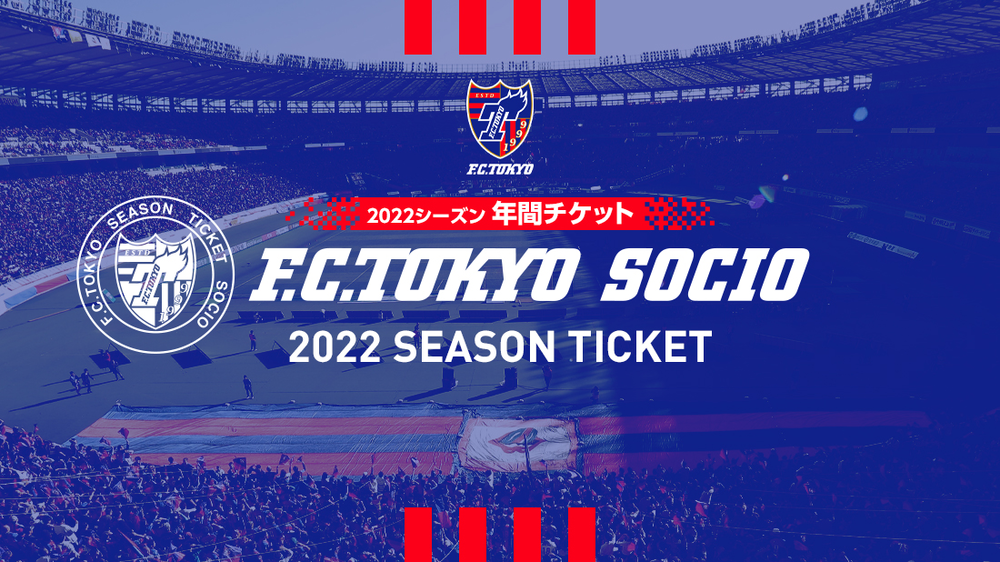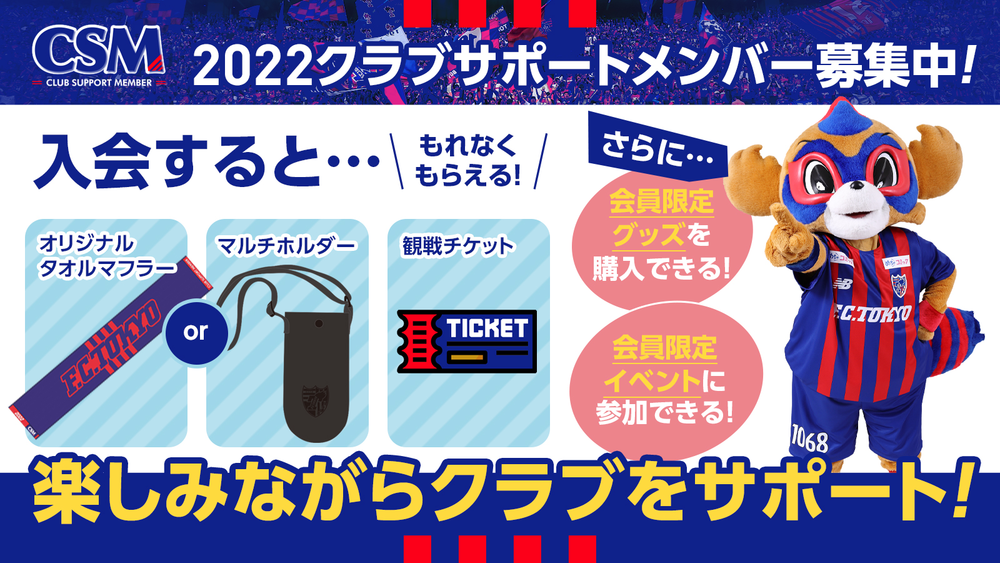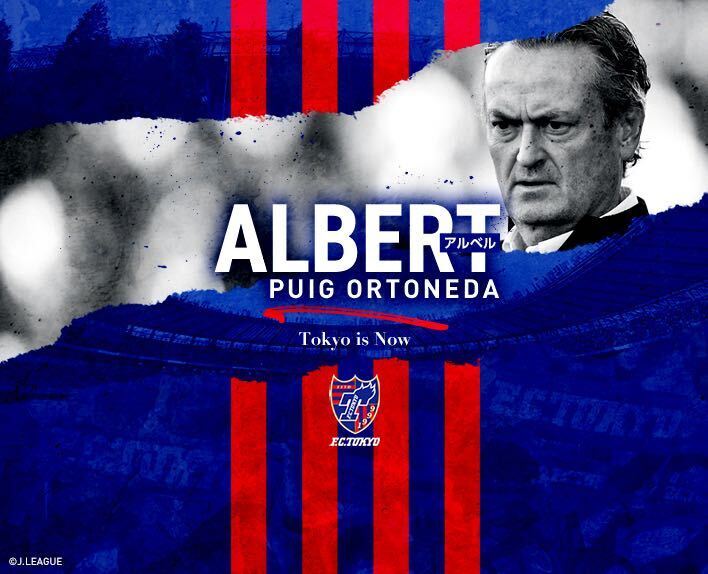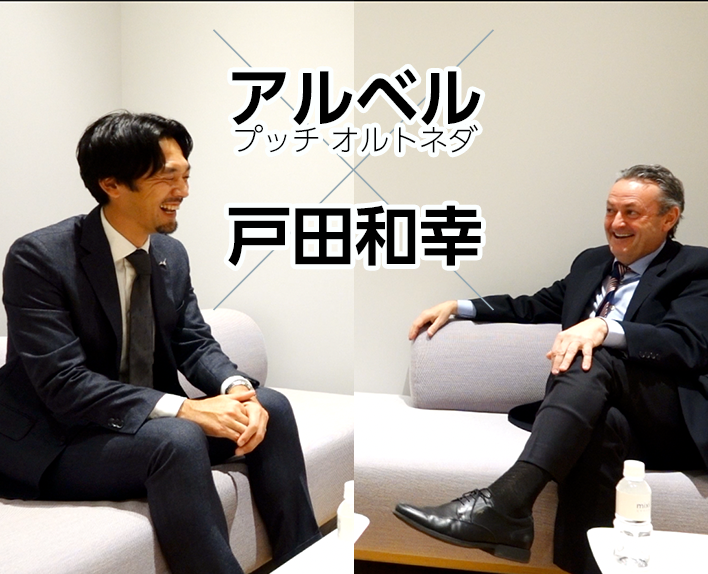Q: Looking back on your professional career, it seems you have smoothly stepped up to J1 clubs, including Renofa Yamaguchi FC, JEF United Chiba, Sagan Tosu, and now joining FC Tokyo this season.
Since I have been a professional, I have always wanted to play in J1, and my professional start was as a trainee with Renofa. I believe the results I have achieved now are the result of my relentless efforts to get on the field and score goals from that point on.
Q: Last season, Sagan Tosu attracted attention with their collective style of soccer. In that context, player Yamashita scored 9 goals in the league. I believe the evaluation from those around you has improved, but I imagine you felt frustrated with the result being just one step away from double-digit goals.
A, the 2021 season was my first challenge in J1. I didn't know how it would turn out for me, but throughout the year, I clearly understood what worked and what didn't. I was really focused on scoring double digits, so to be honest, I was frustrated. After the summer, I couldn't extend beyond 9 goals, but I thought I would eventually get there. However, due to a few injuries and an increase in substitute appearances in the second half of the season, I couldn't reach double digits. Even when coming on as a substitute, as a forward, results are everything. I personally understand that there is a big difference between 9 goals and 10 goals, so I was truly disappointed.
Q: There were matches where you were alternately used with Noriyoshi SAKAI, and even in the next match after scoring well, you started on the bench during the season. Of course, player selection is determined by team tactics and opponents, but did you have any internal conflicts about this?
Yes, that was the case. Honestly, there were times I wondered, "Why am I not being used?" However, I directed the arrow towards myself and understood the areas I needed to improve. I made efforts and challenges in practice to appeal for my selection. Ultimately, the decision rests with the coach, and I never let that frustrate me or neglect my training. Moreover, Sagan Tosu is a team that trains with high intensity, so I couldn't afford to let my guard down. When I wasn't a starter, I'm not sure if it's correct to say I felt frustration, but I did have a vague feeling of unease. However, since the other players were also working incredibly hard without slacking off, I was able to maintain a strong desire not to lose out.
Q: Please tell us specifically about the sense of achievement and challenges you experienced playing on the J1 stage for the first time.
First of all, I felt confident in my ability to score when a good ball comes my way. I believe I was able to demonstrate the off-the-ball movements and quick reactions to the opponent last season. Joining FC Tokyo, I am excited to play at a higher level with players who have a higher individual skill set. Regarding challenges, I realized that in J1, even small mistakes can be fatal, and that a mindset of "this is good enough" does not work here. Whether it's about post-play, switching on defense, or finishing shots, I think this is a stage where attention to detail is crucial.
Q: What were the noticeable differences you felt between the DF in J1 and J2?
A, after competing for the ball, the J1 defenders connect the ball firmly to their teammates. Even when applying pressure, there are times when they cannot go for the steal because their heads are up. The precision in those details is quite high. When facing the opponent during post-work, I was very careful about the direction and angle of my trap and my body's center of gravity. In J1, I have started to lose the ball more than I did in J2, and those losses can be fatal. Throughout the season, I have analyzed my opponents and have memorized certain aspects with my body, but I clearly felt the difference in levels.
Q: I believe that in addition to his strength, Yamashita's smooth turns and agility are also his weapons.
A, I don't think of myself as a particularly skilled player, but what I value the most is my positioning when I don't have the ball, especially in off-the-ball situations. It's about how efficiently I can move towards the goal. I need to think about what state I will be in when I receive the ball and communicate that to my teammates in advance, and I have been focusing on that quite a bit.
Q. Regarding scoring patterns, it seems like you have many styles, such as connecting with crosses or shaking off an opponent face-to-face and striking with your foot.
I am right-footed, but I believe my characteristic is that I can score from anywhere, whether with my left foot or my head. Also, being able to score with few touches is another weapon of mine. I am not the type to break through with dribbling and take a shot on my own, so I focus on positioning myself well and demanding the ball from my teammates.
Q: Are there any players you look up to or have admired since you were young?
A, the season before last was a significant experience for me, and I feel that I changed by playing alongside Mr. Toshito SATO at JEF. I was greatly influenced by his attitude and approach during our daily practices. Until now, I have not had any players I looked up to or admired, and I haven't been particularly conscious of overseas players either. However, Mr. SATO taught me about the key aspects of being a striker and made me realize what kind of players reach the top level. During my time at JEF, I was also greatly influenced by Mr. Kengo KAWAMATA's play, and that year became a major turning point for me.
Q: I think what Sato and Kawamata have in common, as Yamashita mentioned earlier, is how to make high-quality movements off the ball.
A, I think it's precisely about the demands made in areas without the ball. Mr. Sujito makes many demands of his teammates. This is the same for Mr. Kawamata, as it's essential for scoring goals. Whether it's a cross, he would specifically communicate to his teammates, saying things like, 'Not just any area, but put it here' or 'I want it at this timing.' The quality of the connection greatly changes based on whether this communication can happen or not. Learning that attitude was significant for me.
Q: This season, I have jumped into a new environment with FC Tokyo. There are foreign players with diverse playing styles and speedy attackers like Kensuke NAGAI, who is a senior from high school and university. I am looking forward to seeing how the striker Yamashita will thrive in this setting.
A, FC Tokyo has been competing at the top level in Japan since I was a teenager, and last season, Diego OLIVEIRA scored in double digits. I am thinking about how I can compete among such strong individuals. I hope to demonstrate qualities that the current players do not possess. I believe the club acquired me with that expectation, so I aim to maximize those characteristics.
Q: Did you communicate with player Nagai before joining?
A, yes, I have trained together in Fukuoka several times before joining, and I asked various questions about living arrangements and the environment. Since Nagai told me, "Feel free to ask me anything," I felt, "He has such a kind side" (laughs).
He was my direct senior in high school and university, and he used to come to my first kick events during high school. I never thought I would be able to play on the same team as Nagai, so I am very honored and happy.
Q: What has been your impression of FC Tokyo so far?
A, what stands out is the powerful attacking lineup. Their quick attacks after regaining possession are intense, and their ability to break through individually and finish with shots is impressive. Additionally, they are a team that does not neglect defense and works hard. One of the reasons I decided to join FC Tokyo this time is that Coach Albert PUIG ORTONEDA is coming from Niigata. He builds the team based on the concept known as positional play, and I thought that style might match with me. I have a very exciting image of what it would be like if I joined this team that plays with an attacking style. I am really looking forward to that challenge.
Q: Last season, while playing for Sagan Tosu, you practiced positional play under former coach Myung Hwi KIM. Do you feel that playing in that style brought out a new side of yourself?
A, I believe I learned aspects that I had not been aware of until last season. How to break away from the opponent, carry the ball forward, and reach the finish. In defense, how to tactically observe the opponent's movements and make a play. We were able to feel our growth while playing. Honestly, it was quite hard work and tough, but I was really enjoying playing. When I received an offer from FC Tokyo, where Coach Albert PUIG ORTONEDA has newly taken charge, I honestly wanted to play organized and attacking football again, so I came to Tokyo.
Q: In a flexible group that determines its position based on the opponent, did player Yamashita manage to grasp the feeling of thriving as well?
Yes, that's right. If I had to say, during my time at JEF, we played a more orthodox 4-4-2 formation, with many long passes in our attacks and a defensive style that was more withdrawn. We fought in a way that used a lot of power in areas other than just attacking or aiming for goals. However, at Tosu, I intentionally adapted to a style of play that involved breaking down the opponent and advancing the ball towards the goal. I am a player who works in front of the goal and relies on my teammates, so it also became an opportunity for me to reconsider, "What is the style in which I thrive?"
Q, I believe that with Coach Albert PUIG ORTONEDA coming to FC Tokyo, the team's style of football will also be transformed. I think there are expectations for player Yamashita to become the symbolic forward of that style.
A, yes, I do have the desire to become that way, but of course there are many talented attackers here, and fierce competition for positions is unfolding. The team with the new coach has completely changed its flow and methods from the beginning, and there are aspects where it is uncertain whether that will lead to results. It is important to let others know my strengths and to understand the strengths of my teammates as well. This year, the season starts early, so I think it will be about how we can deepen our relationships in a short time. I want to challenge myself to meet the coach's expectations.
Q: Let me ask again, do you have a strong desire to play as a striker in the "number 9" position, Yamashita?
A, yes, I am strong. In my first year with Renofa and also at JEF, I had the opportunity to play in different positions, experiencing both the fun and the struggles. Throughout that, my commitment to the position closest to the opponent's goal and the job of scoring goals has certainly strengthened year by year.
Q, FC Tokyo has a variety of attackers, but I believe there are expectations that player Yamashita has emerged as the long-awaited goal scorer for the team.
A, are you expecting it... (laughs) If so, I would be very happy, but I also realize that playing in that position allows me to showcase my strengths the most, and I believe that by taking that position, I can also benefit my teammates. I have a strong commitment to the striker, number 9 position. I definitely want to score many goals at Ajinomoto.
text by YUKI NISHIKAWA








